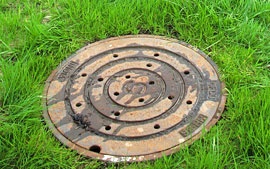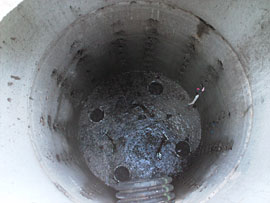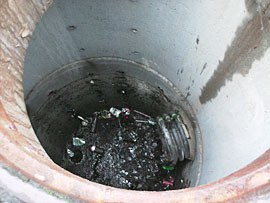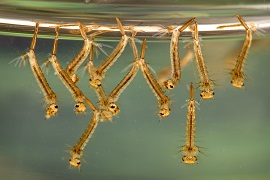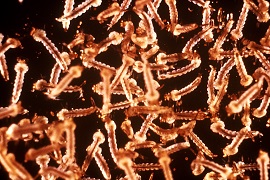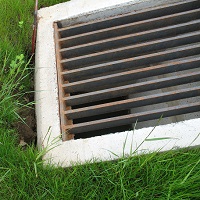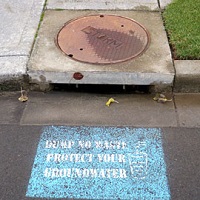Drywell
A drywell is an open-bottomed manhole used to infiltrate stormwater into the ground through holes in the walls. Drywells rely on the stormwater soaking into the surrounding soil. They trap sediment and oily pollutants in runoff, and they can fill with oily sediment in areas that lack treatment facilities. Because drywells can be clogged and tend to concentrate pollutants in one place, pollution and sediment control practices should be used to protect them.
Confined space warning for underground facilities
Due to potential dangers, only trained and certified persons should enter confined spaces. Confined spaces are defined as:
- Large enough that an individual could fully enter the space and work.
- Having limited or restricted entry or exit.
- Not primarily designed for human occupancy.
For more information visit Washington State Department of Labor & Industries.
Due to potential dangers, only trained and certified persons should enter confined spaces. Confined spaces are defined as:
- Large enough that an individual could fully enter the space and work.
- Having limited or restricted entry or exit.
- Not primarily designed for human occupancy.
For more information visit Washington State Department of Labor & Industries.
Maintenance is needed if you see these signs
Water remains in a drywell after extended dry periods
Leaves, trash and other debris slow or stop outflow or filtration.
Sediment in drywell exceeds 60% of depth below the inlet pipe
Drywell openings are clogged, reducing capacity
Evidence of oil, gasoline or other contaminants (see Report Spills)
Tips for fixing problems and general maintenance
Additional drywell elements
Field inlet
A field inlet is a concrete structure that collects stormwater and routes it through underground pipes. Fitted with a slanted, slotted grate, it often traps sediment and debris. Regular maintenance is important. Keep the opening clear of obstructions. A field inlet is usually cleaned by a truck with a vacuum hose but sometimes can be cleaned with hand tools.
Catch Basin
Also known as a storm drain or curb inlet, it can be a round structure (older) or a rectangular box (newer). It is used when connected pipes are less than 18 inches in diameter. The depth from the grate to the bottom of the pipe is usually less than 5 feet.
Report Spills
Chemical spills such as oil, gasoline, paint or herbicides/pesticides may cause harm to surface or groundwater. Spills MUST be reported to the Washington State Department of Ecology and your local city or county. DO NOT attempt to rinse away the spill until it's been checked.
Washington Department of Ecology 24-hour Spill Response Number: (360) 407-6300
Chemical spills such as oil, gasoline, paint or herbicides/pesticides may cause harm to surface or groundwater. Spills MUST be reported to the Washington State Department of Ecology and your local city or county. DO NOT attempt to rinse away the spill until it's been checked.
Washington Department of Ecology 24-hour Spill Response Number: (360) 407-6300
